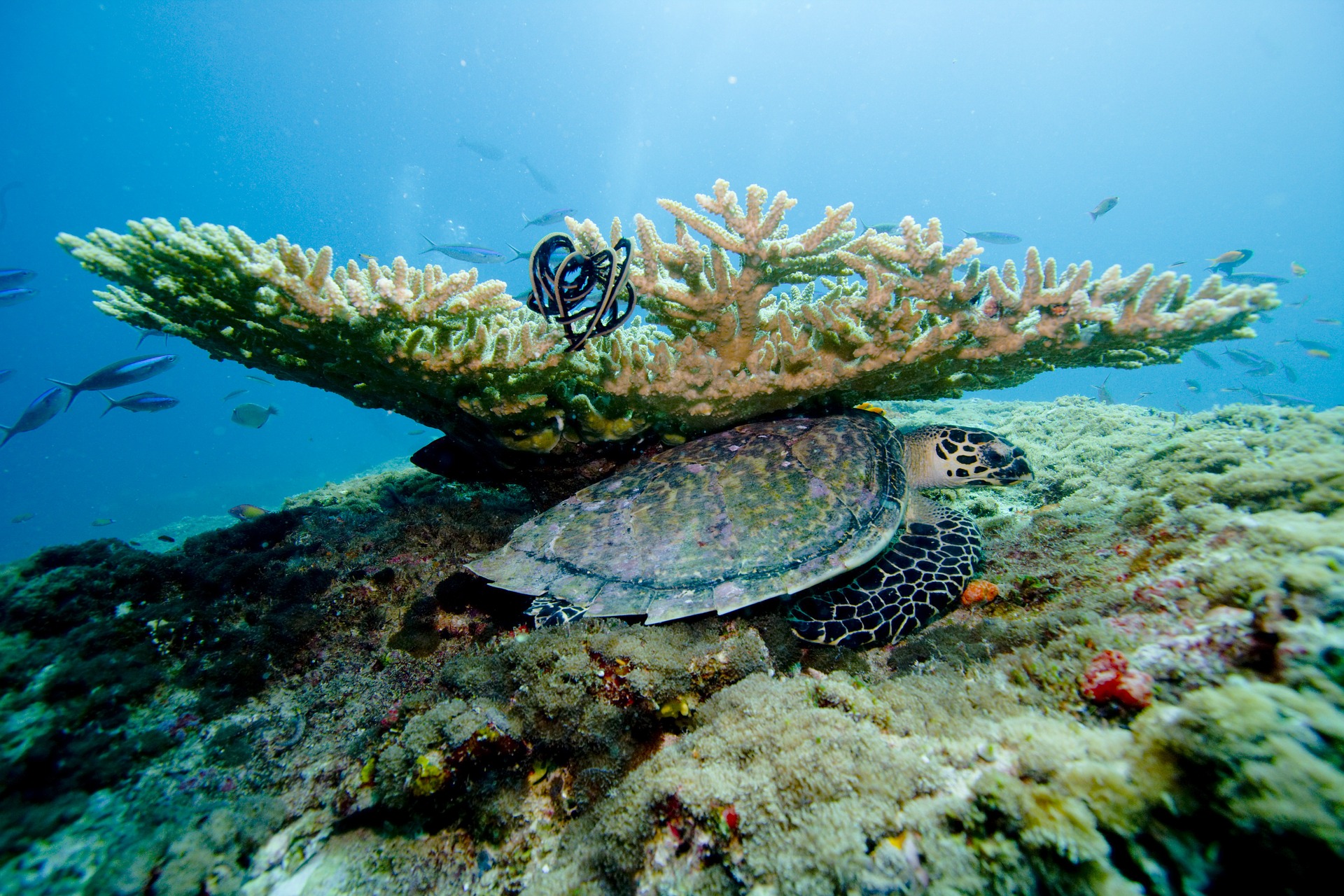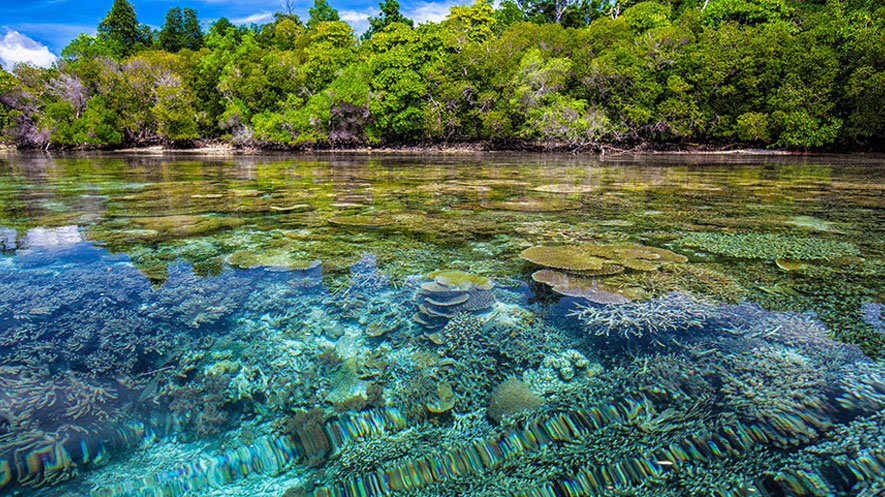Corals that tolerate heat stress may harbor different bacteria than others, reports a New College undergraduate thesis study conducted in the US Virgin Islands. This critical information may help scientists find or raise corals more resilient to increasing temperatures projected with climate change.
For her undergraduate thesis for New College of Florida, senior Constance Sartor worked with Mote Marine Laboratory Staff Scientist Dr. Erinn Muller to study a unique batch of corals in Hurricane Hole, US Virgin Islands, which were particularly resilient during a coral bleaching event caused by elevated temperatures in 2004-2005. Sartor examined which bacteria were associated with three main coral species: Orbicella annularis (boulder star coral), Diploria labyrinthiformis (grooved brain coral), and Colpophyllia natans (large-grooved brain coral) to understand how they may relate to heat tolerance.
“Most corals can only withstand small thermal thresholds, so when you find corals that show remarkable heat tolerance like those in Hurricane Hole, you wonder if they may be able to withstand our rapidly changing climate,” Sartor said. “Corals may seem super simple upon first glance, but they’ve got this whole ecosystem of hundreds or thousands of bacteria thriving within. If you want to understand a coral’s heat tolerance, you not only look at the coral itself, but also its unique bacterial signature which is indicative to its regional success.”
 A coral colony comprises coral animals called polyps that have mutually beneficial (symbiotic) relationships with both bacteria and zooxanthellae, the resident algae that give corals their color. Corals worldwide are threatened by climate change impacts such as temperature increases and ocean acidification, coral disease caused by harmful bacteria and other microscopic life forms, pollution, overfishing and more. When corals are stressed by things such as heat or acidification, the polyps force out the zooxanthellae. This is called coral bleaching and it is the cause of death for many corals.
A coral colony comprises coral animals called polyps that have mutually beneficial (symbiotic) relationships with both bacteria and zooxanthellae, the resident algae that give corals their color. Corals worldwide are threatened by climate change impacts such as temperature increases and ocean acidification, coral disease caused by harmful bacteria and other microscopic life forms, pollution, overfishing and more. When corals are stressed by things such as heat or acidification, the polyps force out the zooxanthellae. This is called coral bleaching and it is the cause of death for many corals.
Within the past 15 years, scientists have found increasing evidence that temperature changes influence coral health and disease, including corals’ resident bacteria. For example, a 2008 report of research led by Mote scientist Muller demonstrated for the first time that elkhorn corals had more outbreaks of white pox disease during heat stress. The corals that bleached became likelier to die from the disease. In 2006, published research by Dr. Kim Ritchie showed that stress from warming water could leave elkhorn coral with fewer beneficial bacteria and more disease-causing bacteria.
Today, scientists want to understand why some corals survive heat stress better than others — important knowledge for nursery-raising hardy corals to restore depleted reefs.
In 2004-2005, coral colonies in some parts of Hurricane Hole, Virgin Islands, were not as affected by the bleaching event as those in other areas. Mote Marine Laboratory, in partnership with Dr. Caroline Rogers from the US Geological Survey and Dr. Ross Cunning of the University of Miami, developed a major research project to determine the influence that both the bacterial community and the zooxanthellae have on the corals’ ability to tolerate heat. Sartor’s research focused on the bacterial microbiome — in this case, the collection of different bacteria associated with an individual coral or coral species. The project was funded by a NOAA Coral Reef Conservation Program grant awarded to Muller in 2016.
In February 2017, participating researchers took samples of corals from Hurricane Hole and from nearby reefs that suffered greater impacts from previous bleaching and disease events. After processing, they found that certain bacterial groups had higher relative abundance in resilient corals at Hurricane Hole compared with less resilient corals at the other reef sites. This difference between sites came in multiple “versions,” specific to each coral species.
“We have a better idea of what the bacterial community looks like in the corals in the resilient site,” Sartor said. Prior to this study, no one knew what made the corals in Hurricane Hole resilient; however, now, “we have found a certain bacterial signature that may influence [the corals’] resilience.”
One of the next steps is to sample corals in other resilient sites and to determine commonalities among the bacteria. Through identifying similar bacteria between corals in Hurricane Hole and other resilient sites, researchers can try to determine the ecology of those bacteria as well as their potential as probiotics. If beneficial bacteria are identified as key players within the microbiome of corals, then scientists can screen for their presence in other corals in the wild. Additional, scientists may ultimately even be able to treat corals with a probiotic to increase their resilience.
By Claudia Vila, MOTE Marine Laboratory & Aquarium



